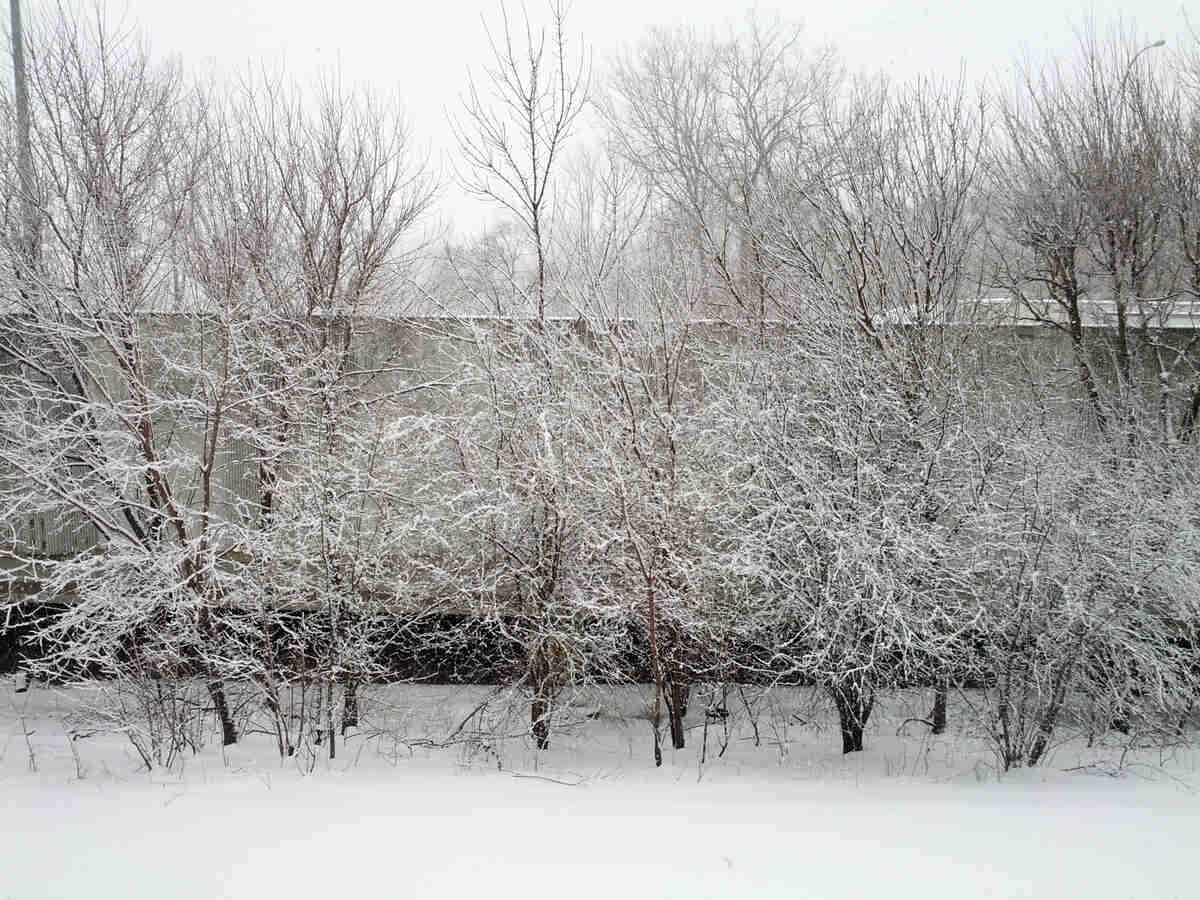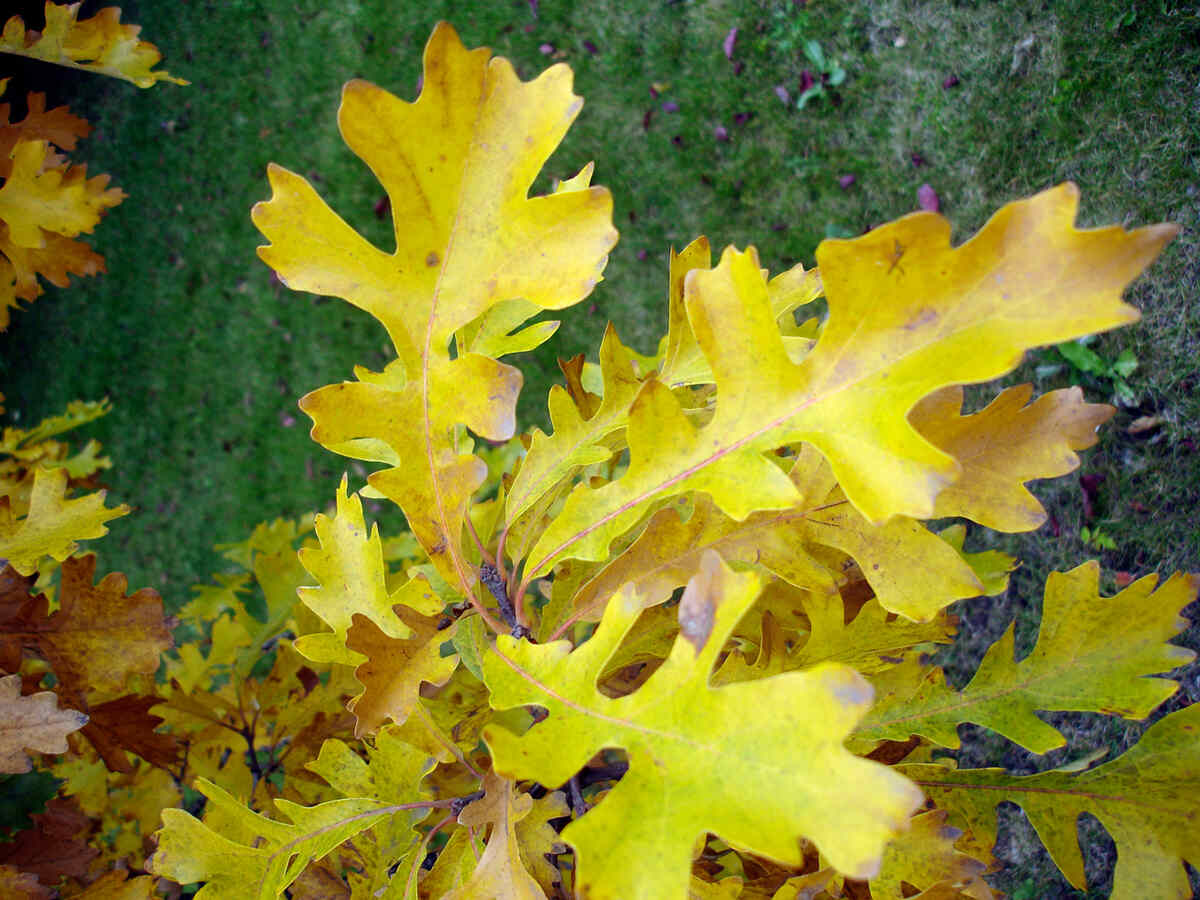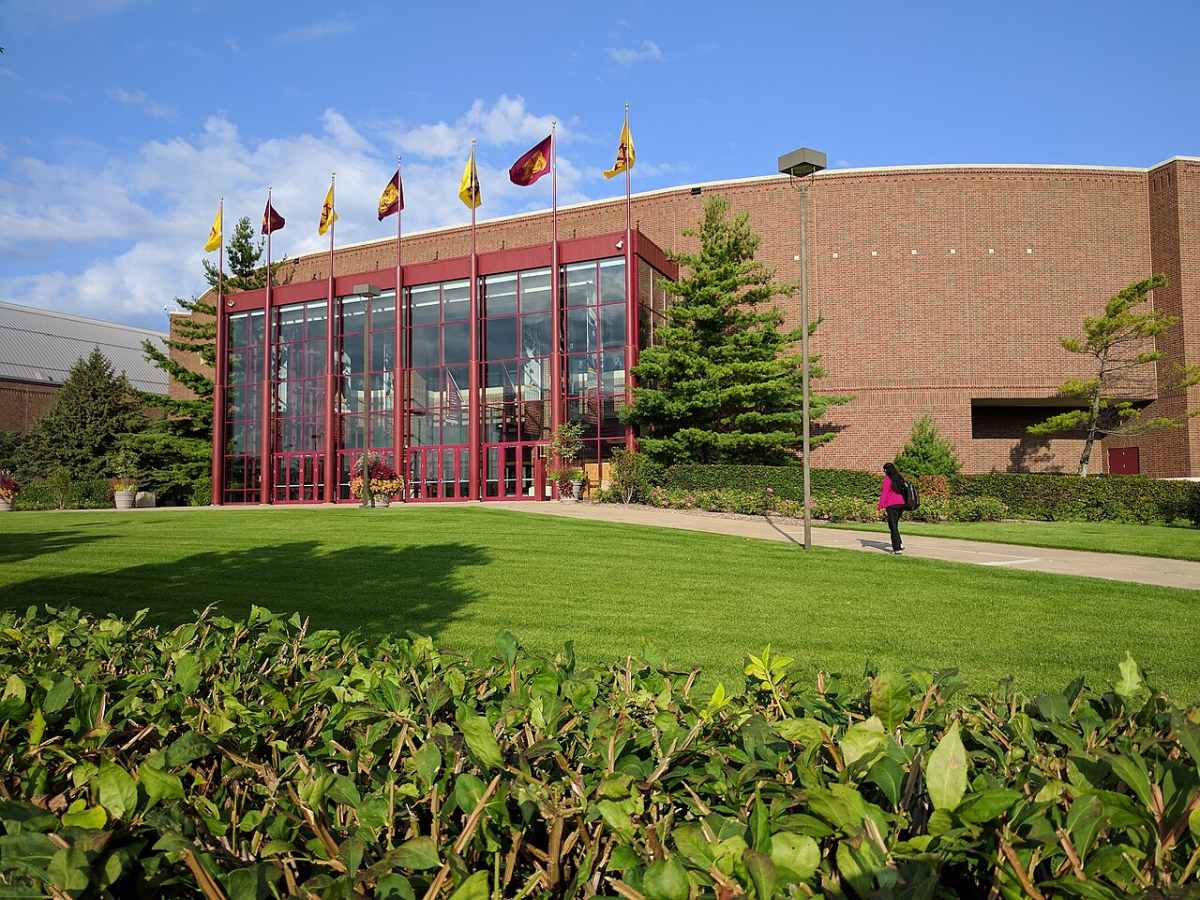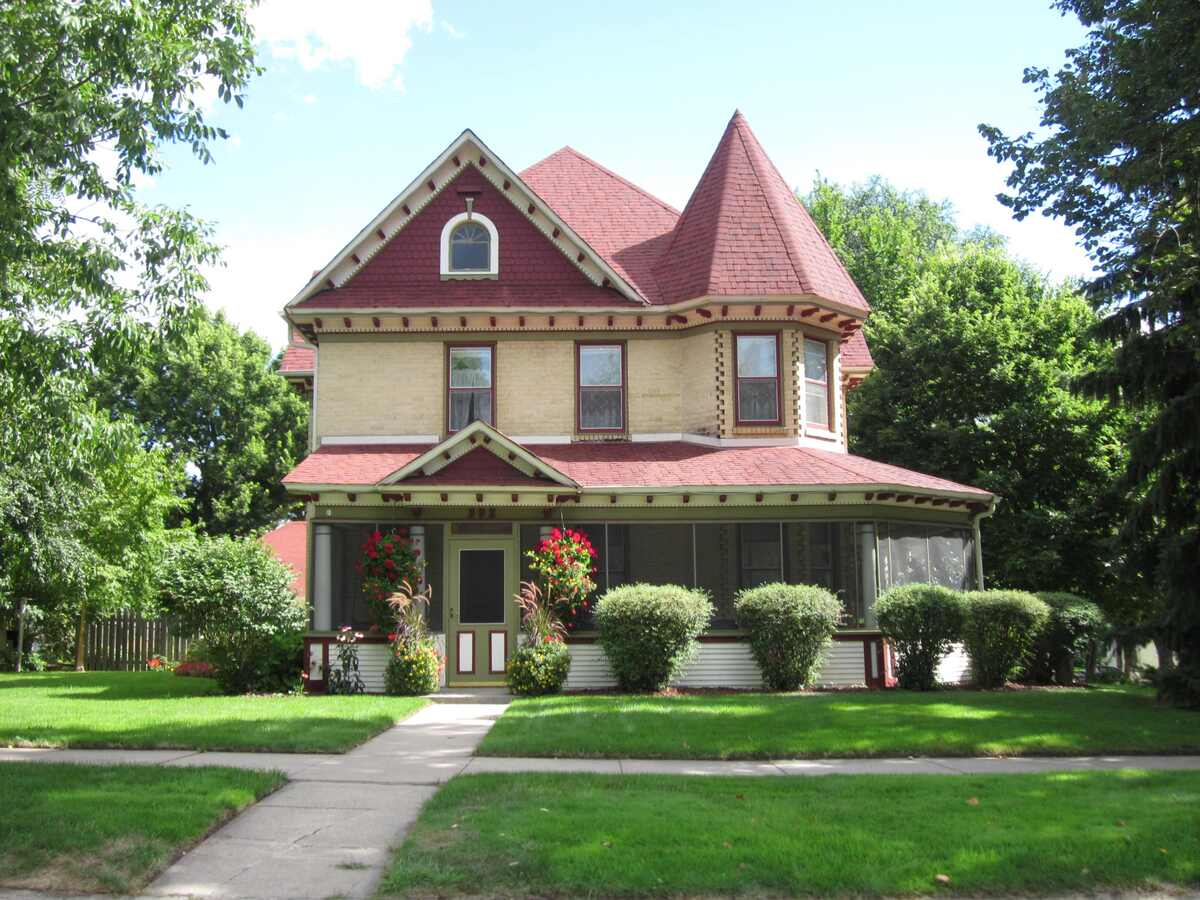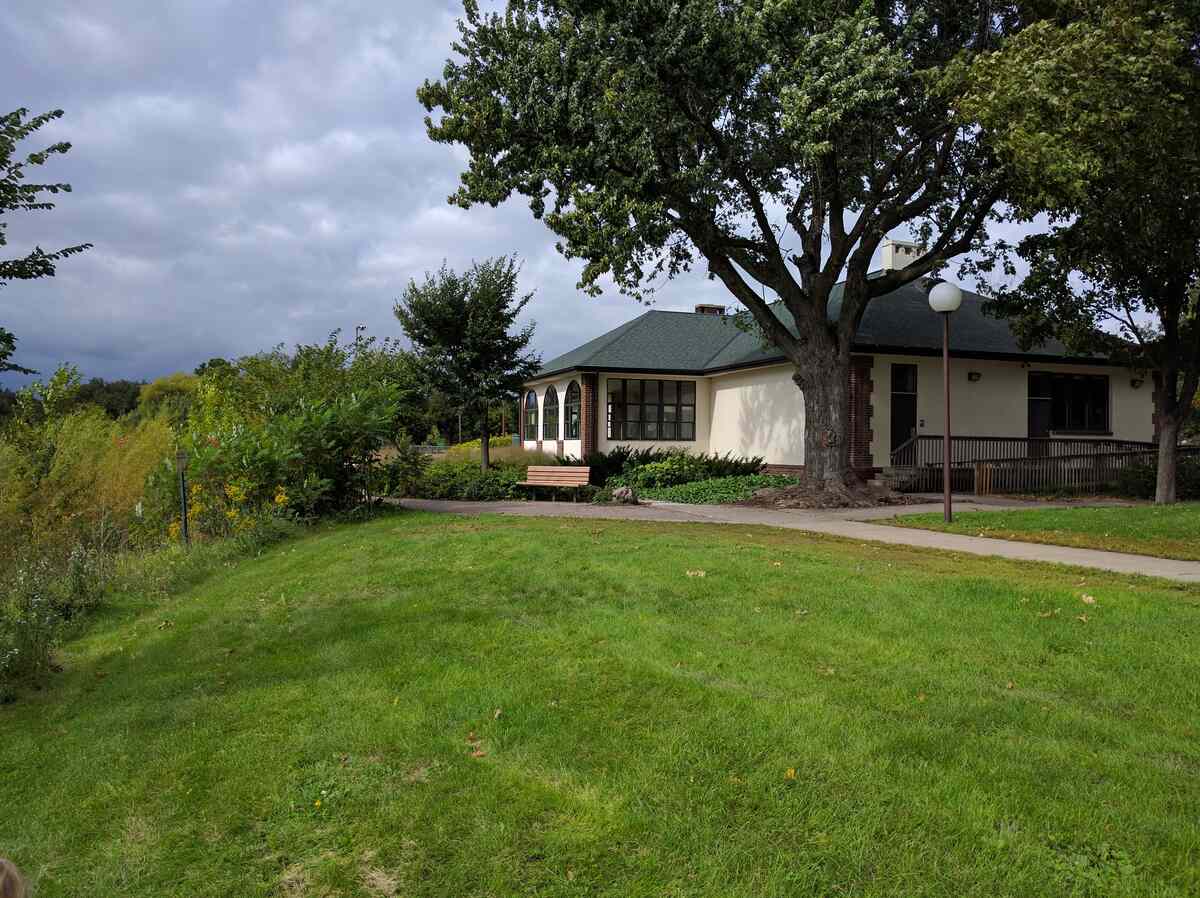
Minneapolis is known for the Walker Art Center, Minneapolis Sculpture Garden, Minneapolis Institute of Art, and numerous other galleries. You, too, want your lawn to be a masterpiece. Check out our guide to the four best grass types for Minneapolis, MN, to see just how you can join the art scene in your neighborhood.
Short on time? Skip ahead to our quick guide on how to choose the best grass type for your Minneapolis lawn.
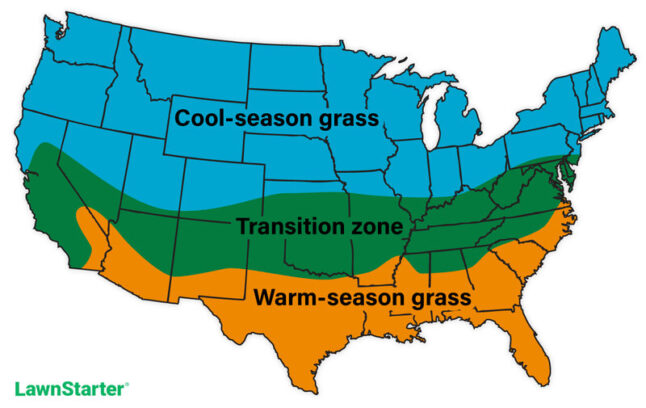
Cool-Season Grasses: The Coolest
In Minneapolis, located far north of the transition zone, only cool-season grasses thrive. These grasses experience the highest growth rates between 65 and 80 degrees F but can also survive −25- to −20-degree F winters.
The most common cool-season grasses for seeding and sodding Minneapolis lawns include Kentucky bluegrass, turf-type tall fescue, fine fescue, and perennial ryegrass. Often, these are blended for different needs and uses, such as high-traffic areas or lawns with a lot of sun or shade.
Kentucky Bluegrass

Photo Credit: Matt Lavin / Flickr / CC BY-SA 2.0
Native to nearly all Europe, northern Asia, and the mountains of Morocco and Algeria, Kentucky bluegrass has been used in lawns, athletic fields, golf courses, and pastures since European settlers came to North America. This grass carries a lush, dark emerald color with a blue hue.
Grubs, billbugs, and sod webworms can seriously affect Kentucky bluegrass, so keeping your lawn healthy and moderately watered should help. Solved by herbicides or proper lawn care (aerate, dethatch, water properly), weed problems for bluegrass include crabgrass, dandelions, and clover. Thatch buildup can be severe.
- Classification: Cool-season grass
- Spreads by: Rhizomes
- Shade tolerance: Low
- Drought tolerance: Moderate
- Foot traffic tolerance: Moderate
- Maintenance needs: Moderate mowing frequency and high fertilization needs.
- Mowing height: Set mowing height between 2.5 and 3.5 inches.
- Potential for disease: Moderate to high; prone to several diseases, such as dollar spot, leaf spot, necrotic ring spot, summer patch, and stripe smut.
- Soil pH: 6-7.5
- Soil type: Performs best in well-drained, heavy soils with high fertility.
Other notes: Control excess thatch by dethatching or aerating in the fall.
Grass Seed Options:
– Jonathan Green (11970) Blue Panther Kentucky Bluegrass Grass Seed (3 lbs.)
– SeedRanch Midnight Kentucky Bluegrass Seed (5 lbs.)
– Jacklin Seed – Biltmore Blue Blend – 100% Kentucky Bluegrass (5 lbs.)
Turf-Type Tall Fescue

Aaron J. Patton, Ph.D. / Turfgrass Extension Specialist at Purdue University
Turf-type tall fescue lawn maintenance progresses easily in Minneapolis because this grass grows well in the upper United States. Kentucky-31 and Alta, the two oldest varieties in use today, produce weak turf. You’re better off going for the newer turf-type tall fescues that produce denser grass and year-round green.
It’s probably best to plant with more than one cultivar of turf-type tall fescue when you seed. If your tall fescue lawn becomes worn from summer use, overseeding can repair bare patches in the fall. White grubs sometimes threaten the roots of tall fescue, but a healthy lawn will usually recover on its own.
- Classification: Cool-season grass
- Spreads by: Produces short rhizomes but has a bunch-type growth habit
- Shade tolerance: Moderate
- Drought tolerance: Moderate to High
- Foot traffic tolerance: Moderate
- Maintenance needs: Frequent mowing. Does not produce significant thatch.
- Mowing height: Set mowing height to 2 inches when grass reaches 3 inches high.
- Potential for disease: Tolerant of most diseases when properly maintained.
- Soil pH: 5.5-6.5
- Soil type: Adapted to a wide range of soil conditions but prefers fertile clay soils with good drainage.
Other notes: Don’t confuse turf-type tall fescue with annual fescue; as the name indicates, annual fescue will not come back the following year.
Grass Seed Options:
– Triple-Play Tall Fescue Grass Seed Blend (5000 sq ft)
– Eretz Kentucky 31 K31 Tall Fescue Grass Seed (choose your size)
– Pennington The Rebels Tall Fescue Grass Seed Mix (7 lb.)
Fine Fescue
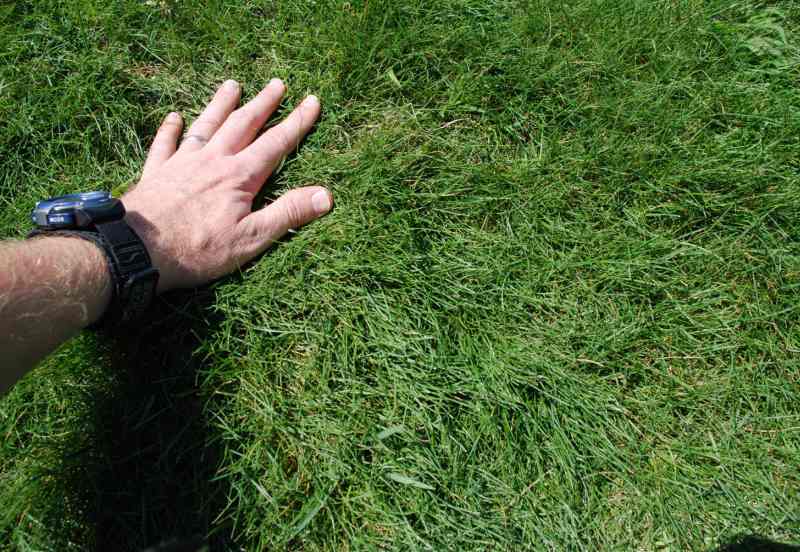
Aaron J. Patton, Ph.D. / Turfgrass Extension Specialist at Purdue University
Several species make up the fine fescues. Often planted as a mixture with ryegrass, Kentucky bluegrass, or tall fescue, these grasses require less maintenance (e.g., mowing, watering, fertilizing) than Kentucky bluegrass. They also tolerate shade better and are well adapted to most of the growing conditions of the Land of 10,000 Lakes.
These grasses are often grown on commercial properties, golf courses, parks, and home lawns. Fine fescues have fine, narrow leaves with a light- or medium-green to blue-green color, depending on the species.
- Classification: Cool-season grass
- Spreads by: Creeping red fescue spreads by rhizomes, whereas other fine fescues, such as Chewings, hard, and sheep fescues, are bunch-type grasses.
- Shade tolerance: Moderate to high, depending on the species
- Drought tolerance: Moderate to high, depending on the species
- Foot traffic tolerance: Low to moderate, depending on the species; often clumps with heavy traffic
- Maintenance needs: Low fertilizer and mowing needs
- Mowing height: Set mowing height between 2.5 and 4 inches, depending on the species.
- Potential for disease: Moderate. Common diseases include red thread, leaf spot, dollar spot, summer patch, and powdery mildew.
- Soil pH: 6-6.5
- Soil type: Will not perform well in wet soil conditions. Prefers drier soils and tolerates a wide range of soil types and fertility.
Other notes: Fine fescue is often planted in a seed mix of five of its varieties.
Grass Seed Options:
– Outsidepride Legacy Fine Fescue Grass Seed (5 lbs.)
– Eretz Creeping Red Fine Fescue Seed (choose your size)
– Outsidepride Creeping Red Fine Fescue Grass Seed (25 lbs.)
– Outsidepride Hard Fine Fescue Grass Seed (10 lbs.)
Perennial Ryegrass
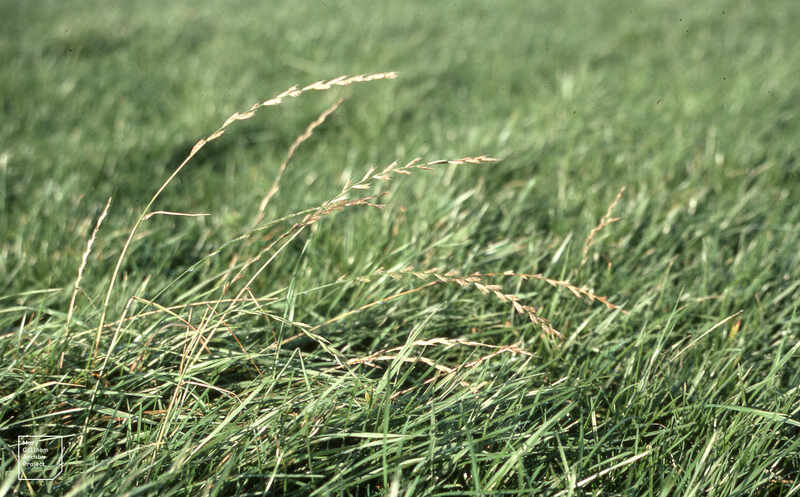
Photo Credit: Dr Mary Gillham Archive Project / Flickr / CC BY 2.0
Introduced to all continents except Antarctica, perennial ryegrass should be mixed with Kentucky bluegrass or one of these other cool-season grasses and can be used to fill in bare spots during your fall overseeding. A dark green color, perennial ryegrass requires a sharp mower blade; it’s somewhat difficult to mow because it tends to bunch.
- Classification: Cool-season grass
- Spreads by: Has a bunch-type growth habit
- Shade tolerance: Low
- Drought tolerance: Low
- Foot traffic tolerance: High
- Maintenance needs: Moderate mowing and fertilization requirements. Thatch is not significant.
- Mowing height: Set mowing height to 1.5 to 2.5 inches.
- Potential for disease: High. Common diseases include gray leaf spot, red thread, and leaf spot/melting-out.
- Soil pH: Can grow in soils with a pH between 5 and 8 but prefers between 6 and 7.
- Soil type: Prefers good drainage and fertility but can tolerate some poor drainage.
Other notes: Perennial ryegrass creates a dense lawn that is quick to establish.
Grass Seed Options:
– Outsidepride Perennial Ryegrass Seed (5 lbs.)
– Eretz ProTurf Perennial Ryegrass Fine Lawn Seed (choose your size)
How to Choose the Best Grass Type for Your Minneapolis Lawn
Because one type of grass may not provide everything you want or need, it’s likely a mixture of grasses would be best for your lawn. You may choose to remain with one type or want a combination to fulfill your lawn’s needs.
Shade Tolerance
What kind of shade does your yard have? Do you have large trees with branches stretching wide? Or smaller trees that will eventually grow tall? Either way, you’ll need to pay attention to the shade tolerance of the grass you choose.
- Low shade tolerance: Kentucky bluegrass, perennial ryegrass
- Moderate shade tolerance: Turf-type tall fescue
- Moderate to high shade tolerance: Fine fescue
Drought Tolerance
Per the Minnesota Department of Natural Resources, drought in Minnesota occurs somewhere every year. Unless you want to drag out the sprinklers when it’s Minneapolis’ turn, you need to consider your grass’ drought tolerance.
- Low drought tolerance: Perennial ryegrass
- Moderate drought tolerance: Kentucky bluegrass
- Moderate to high drought tolerance: Turf-type tall fescue, fine fescue
Cold Tolerance
Brrr! It can get pretty frigid in Minneapolis, so you’ll want a grass that can survive this cold. You’re good to go with either fescue.
- Low cold tolerance: Perennial ryegrass
- Moderate cold tolerance: Kentucky bluegrass
- High cold tolerance: Turf-type tall fescue, fine fescue (even better tolerance than tall fescue)
For more information on caring for your lawn during the cold season, check out 9 Winter Lawn Care Tips for Minneapolis.
Heavy Foot Traffic
Grass is sensitive to the wear and tear it receives from pets, children, and even you. If your lawn takes a lot of foot traffic, it may need a grass highly rated for it.
- Low to moderate foot traffic: Fine fescue
- Moderate foot traffic: Kentucky bluegrass, turf-type tall fescue
- High foot traffic: Perennial ryegrass
High versus Low Maintenance
You want to spend your summers paddling on the Mississippi or on one of Minnesota’s many lakes, not futzing with your grass. All four Minneapolis grasses are moderate to low maintenance.
- Moderate-maintenance grasses: Kentucky bluegrass, perennial ryegrass, turf-type tall fescue
- Low-maintenance grasses: Fine fescue
Call a Pro
Investing a few hundred dollars in a lawn care service can raise your property value around 350%. You can plant and mow your cool-season Minneapolis, MN, grass like a pro. Or, to help you choose the best grass or grasses and then maintain them, contact your friendly neighborhood Lawnstarter professional.
LawnStarter participates in the Amazon Services LLC Associates Program, an affiliate advertising program. LawnStarter earns revenue from products promoted in this article.
Main Image Credit: Runner1928 / Wikimedia Commons / CC BY-SA 3.0
